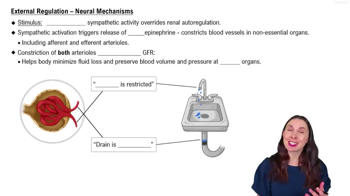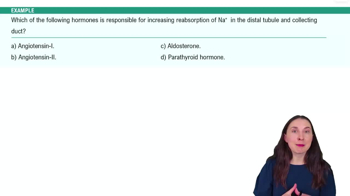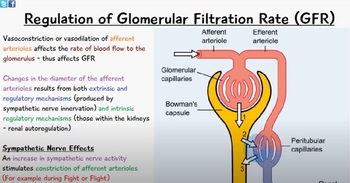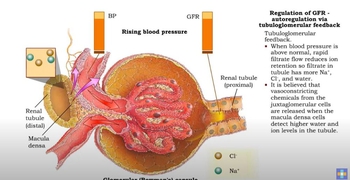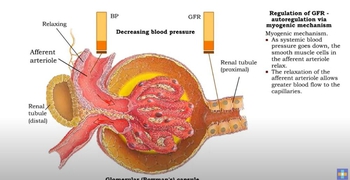25. The Urinary System
Renal Physiology: Regulation of Glomerular Filtration
Learn with other creators
Practice this topic
- Multiple Choice
The myogenic mechanism is triggered by changes in the stretch of the afferent arteriole. This is the direct result of:
472views7rank - Multiple Choice
The sympathetic nervous system releases _____________, which causes constriction of the afferent and efferent arterioles.
457views5rank - Multiple Choice
Angiotensin-II directly increases glomerular filtration pressure by _____________ the ___________ arteriole.
443views5rank - Multiple ChoiceWhich process results in increased blood pressure in response to hormone release?1216views1rank
- Textbook Question
Fill in the blanks for the following statements:
a. When the GFR decreases, the macula densa releases chemicals to______ the afferent arteriole.
b. The sympathetic nervous system______ the blood vessels supplying the kidney _____ to the glomerular filtration rate.
c. The enzyme _____ is released by JG cells in response to a decrease in the GFR.
d. The enzyme ______ converts angiotensin-I to angiotensin-II.
e. Generally, angiotensin-II______ systemic blood pressure while _____ the GFR.
374views1rank - Textbook Question
Describe the mechanisms of extrinsic regulation of GFR, and their physiological role.
526views - Textbook Question
Describe the mechanisms that contribute to renal autoregulation.
495views - Textbook Question
Which of the following is/are true about ADH?
a. It promotes obligatory water reabsorption
b. It is secreted in response to an increase in extracellular fluid osmolality
c. It causes insertion of aquaporins in the PCT
d. It promotes Na⁺ reabsorption
433views








